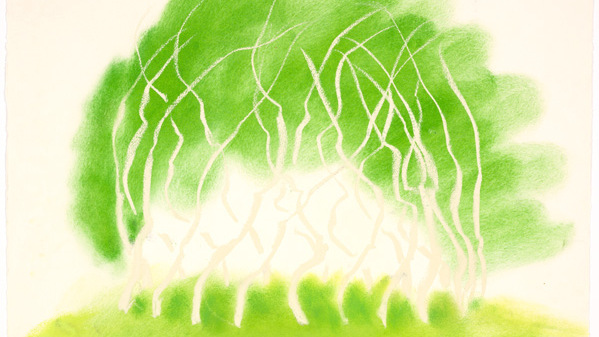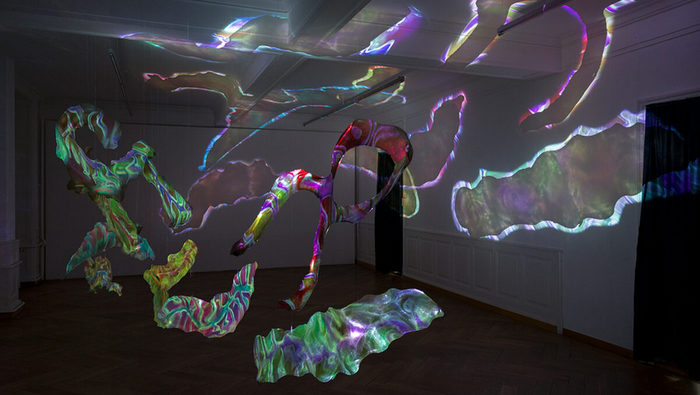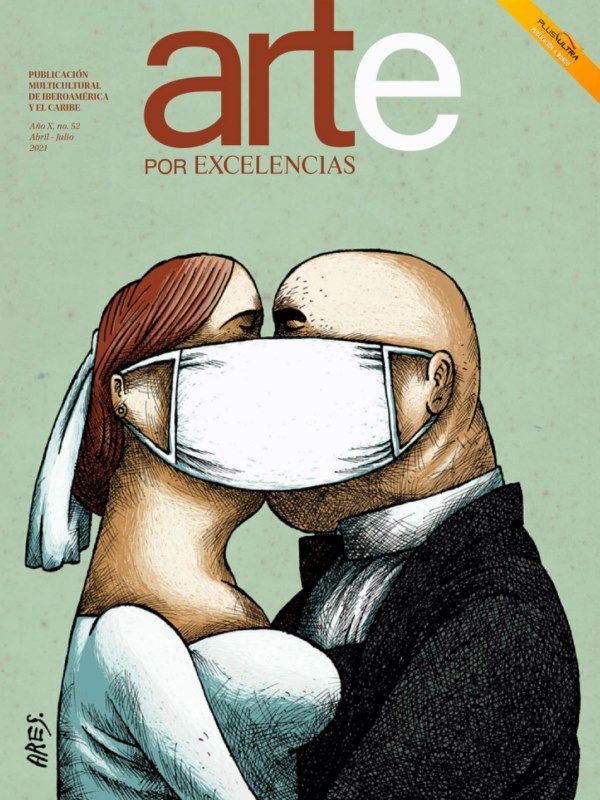This exhibition brings together a major ensemble of works by James Lee Byars (Detroit, Michigan, 1932 – Cairo, 1997), one of the most enigmatic and distinctive figures in twentieth-century art, to render an account of his sweeping investigations into that which exceeds the limits of logic. Sitting halfway between mysticism, spirituality and corporality, Byars’s visual and performative language spanned sculpture, installation, performance, drawings, the word and the assembly of his own exhibitions, conceived as installations in their own right.
From the late 1950s and throughout the 1960s, the artist lived between Japan and the USA, his fascination with Japanese culture markedly influencing his work. Furthermore, he held close ties with Italy, particularly with the city of Venice, where he lived and worked for much of the 1980s. Across his trajectory and perhaps as a reflection of his nomadic way of life, Byars combined in his work a profound knowledge of Western art and philosophy with motifs, concepts and symbols from oriental traditions and civilisations, for instance elements of Noh theatre and Zen Buddhism. This resulted in a unique view of reality that was particularly mindful of physical and spiritual entities; thus, his artistic practice could be described as a mystical-aesthetic-existential reflection on ideas of perfection and cyclicity, as well as on forms of representation and the dematerialisation of the human figure.
In his explorations, Byars often searched for the involvement of the audience through temporary actions or large-scale interventions, in which he put forward different questions directly or indirectly, and on other occasions he took it upon himself to activate them. Since his death, this last aspect has given rise to questions around the visual and symbolic connections of a body of work in which the presence of the forever charismatic Byars — his gestures, rituals and attire — is key.
The selection of works for this show surveys the artist’s conceptual approach and the characteristics of the exhibition space, the Palacio de Velázquez, the marked symmetry of which underscores the monumentality and geometrical simplicity of the pieces. On display are large-scale works made from precious and refined materials — marble, silk, gold leaf, crystal — and which harmoniously combine with minimal and archetypal geometries — prisms, spheres, pillars — to set forth plays with crossed references between form and content. One such example is Red Angel of Marseille (1993), located in the centre of the Palacio: an installation in which a thousand red-glass spheres arranged on the floor draw an anthropomorphous figure reduced to its essence, while the angelical connotation of the title prompts a reflection on the links between the material and the divine. A totemic strand is also conspicuous in The Golden Tower with Changing Tops (1982), a golden tower rising almost four metres high which compiles the artist’s investigations around the immutable. Furthermore, life cycles and natural processes of change are represented though circles and spheres in the works The Door of Innocence (1986–1989), a golden marble sculpture in the form of a ring which symbolises transit and transformation, and The Tomb of James Lee Byars (1986), where the artist metaphorically encapsulates in a sandstone sphere the intangible concepts of spirituality and purity, in contrast to this porous, stratified material.
In addition to featuring early works such as Self-Portrait (1959), which allow for an appreciation of Byars’s humour, the show is completed with the documentation of the artist’s performance activity, specifically the missing installation The Golden Sphere presented by the artist in Granada in 1992, and for the unveiling of which he organised a performance in collaboration with the artist and poet Miguel Benlloch (Granada, 1954 – Seville, 2018), who recorded this process in his installation O donde habite el olvido (2000), also present in the show.
Surveying the multiple allegorical and formal meanings of the matter explored by the artist, the show focuses on the main themes crossing his work, such as the search for perfection, doubt as an existential consideration and the finitude of the human being, and invites spectators to reflect on the alchemic potential of art to sculpt reality.
On the cover: James Lee Byars, The Door of Innocence, 1986-1989 (foreground) and The Figure Question is the Room, 1986 (background). View of the exhibition in Pirelli HangarBicocca, Milán, 2023. Courtesy of Pirelli HangarBicocca, Milán. Photograph: Agostino Osio
Source: Museo Nacional Centro de Arte Reina Sofía
Related Publications

Galerie Lelong & Co. | David Nash
November 22, 2024(S)elf Portraits: Fiction, Fantasy, and Sci-Fi in Portrait
November 18, 2024
Auswahl 24- Guest artist: Victoria Holdt
November 15, 2024










